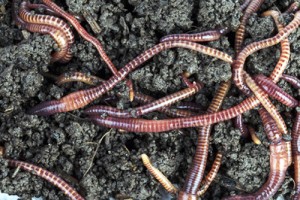OECD 317: Bioaccumulation of Terrestrial Oligochaetes

OECD 317 is a bioaccumulation test on terrestrial oligochaetes (earthworms).
The OECD 317 method measures the residues of a test substance in earthworms after exposure to the test substance mixed with soil. The method consists of two phases- the uptake phase and elimination phase. Bioaccumulation rate is assessed after both phases are complete. OECD 317 testing is useful for any chemical that may come into contact with soil.
Soil-ingesting invertebrates, like terrestrial oligochaetes, are constantly exposed to soil- bound substances and play an important role in the structure and function of soils. Terrestrial oligochaetes perform bioturbation of soil and serve as prey to many organisms, making them a strong influence on the bioavailability of substances to other organisms.
Test Organisms
The most commonly used species of terrestrial oligochaetes (earthworms) are members of the Eisenia or Enchytraeus genera.
Method Summary
Earthworms are exposed to the test substance in the treated soil for 21 days (uptake phase). Earthworm and soil samples are then analyzed for the test substance. At the end of the uptake phase the earthworms from remaining test units are transferred to untreated soil and incubated for another 21 days (elimination phase). Earthworm samples are again analyzed for the test substance.
Analysis
Three parameters determine the sample’s bioaccumulation: bioaccumulation factor (BAF), uptake rate constant (ks) and elimination rate constant (ke).
It is important to have data on the test substance’s water solubility (OECD 105)*, vapour pressure, physical and chemical properties of the material including structural formula, purity of the substance, stability in water and light, the Partition Coefficient (OECD 117)*, Dissociation Constants in water (OECD 112)*, and biodegradability.
For more information on Bioaccumulation testing, contact our Environmental Test Laboratory at 847-483-9950 or info@situtest.com.

